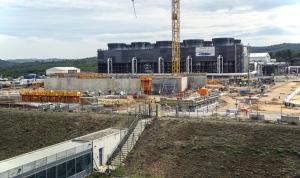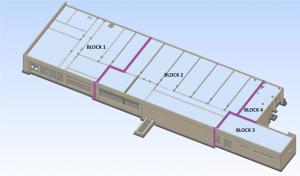A question of balance
Construction on the main ITER Control Building is now underway. Scientists, engineers and operators will work from this building on the platform to monitor machine operation and analyze the data they receive from each pulse.
"If the tokamak is the heart of the ITER worksite, then the control building is the brain," says Paul Stewart, a civil engineer in the Building & Civil Works Section. Inside of the main Control Building, which is a non-nuclear structure directly accessible from ITER Headquarters, experts will operate the machine from the control room, and a server room will store data for future reference. But the control building will also serve as a primary workspace for these experts, and this is where the non-nuclear distinction becomes necessary.
While working through plans and designs for a control building, the ITER Organization sought to balance two important requirements—the need to protect the critical function of the building through safety-important-class construction (by definition, windowless and drab), and the desire to create an optimum work environment. The solution? To build two buildings instead of one. The first is designed as a comfortable and efficient workspace, while the other is an emergency fallback.
One of the first steps of construction back in March was to create an access point to the non-nuclear building. This meant digging a tunnel from the control building to the pre-existing bridge that connects ITER Headquarters with the platform. The first concrete pour for the basement took place in April, and now the construction crew is working on foundation slabs, walls, infrastructure and drainage.
The principal contractor and supplier for this project is Demathieu Bard Construction (DBC), through a contract with the European Domestic Agency, Fusion for Energy. As part of this contract, DBC will also work on the buildings housing the neutral beam power supply installation and the fast discharge and switching networks resistor building, along with the busbar and cryogenic bridges.
The main Control Building itself will sit on the northern end of the worksite, adjacent to the cooling towers. The 3,500 m² structure will have three floors: a basement, ground floor and mezzanine. Inside will be housed the main control room and server room, along with individual offices and areas for refreshments and other support facilities.
Once the civil engineering phase is complete at the end of the year, the next step for the non-nuclear control building is steel work. The steel elements should begin to arrive soon; in the meantime, building systems such as HVAC are under manufacturing review and will be constructed once they have been approved. Ultimately, the goal is to complete construction of the building and services in summer 2022 with commissioning activities finished later in the year.
Though the control building is not a physical component of the machine, its completion will be another step toward the start of operation. Without its brain, the pulsing heart of ITER cannot function.



